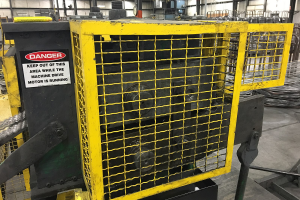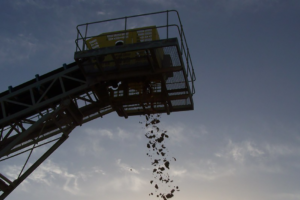Manage Safety Risk – Get a “2 Fer”
Our guest blogger today is Mike White, a new senior advisor for FDRsafety who comes to us after a great career at GM, where he was most recently Global Safety Director.
Let me explain the title and the premise of this blog. If you manage for risk, you also manage for compliance. However, if you manage for compliance, you may overlook risk and hazards that result in serious or fatal injuries.
I recently retired from General Motors where I spent the last part of my career as Global Safety Director. Prior to that position, I was co-director of our joint efforts with the UAW. I spent more than 30 years in operations before going into safety and wondered, “How did I get here?” In both safety positions, I reported to operations executives. It didn’t take me long to appreciate the wisdom of fully integrating safety with daily operations. Thankfully, the groundwork to manage risk within GM and our joint process had been laid.
I’ll share with you my learning and experiences of why managing risk gets you a “2 Fer.” Most safety professionals are aware that OSHA, by mandate, is a violations-based approach. Identification and mitigation of violations is necessary but not sufficient. You must obviously do those things required by OSHA, but that alone will not eliminate injuries, especially those associated with non-routine tasks.
Risk assessment allows workers to assess the exposure to hazards for both routine and non-routine tasks. Let’s say that a maintenance worker is called to fix a machine where parts are not locating properly during machining or assembly. That worker may have to stand in a designated safe place inside an interlocked perimeter guard and observe the machine in full automatic mode.
Upon diagnosing what is thought to be the problem, the worker will identify a pre-task plan to repair the machine in a safe way, lockout the machine and make the necessary repair. Obviously, if there is no safe position from which to observe the machine or perform the task we have a different challenge.You must obviously do those things required by OSHA, but that alone will not eliminate injuries, especially those associated with non-routine tasks.
What happens with a violations-based approach
If you take a purely violations based approach, as OSHA does, it’s typical to find a rule that says, the worker cannot, under any circumstances, be inside the guard with power on. That’s like telling your mechanic that he/she cannot have your automobile engine running to perform diagnostic work. Good luck with that. Workers know when safety rules do not allow them to perform their jobs, and they usually circumvent or ignore the rules to get equipment running. I’m not talking about shortcuts for expediency. I’m talking about jobs that cannot be performed because our philosophy and designs of machines and guarding emanate from violations-based thinking.
The other benefit of managing risk is enabling the identification of situations that we never see because they could be on off shifts or are in those remote locations where maintenance or other periodic tasks might be performed. Asking a worker, “If I was a family member who just hired in, what job (whether daily, weekly or annually) might seriously injure me?” You will find that kind of information typically does not show up in our housekeeping or OSHA audits. Workers don’t have to be experts to understand the fundamentals of risk.
Lastly, traditional safety terms and programs make both workers and executives glaze over. Risk, on the other hand, is the language of business and the common hinge for all safety programs. Whether safety, business risk, insured risk, market risk, etc., top management understands the fundamentals of risk without a prep course.
In summary, manage risk and get the “2Fer” of managing both risk and compliance.


